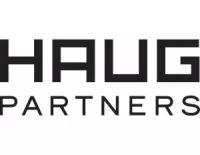Whether it is a smartphone, a fraud alert received from a financial institution, a vehicle modifying its settings based on current driving conditions, or political ads that will soon infiltrate our airwaves, artificial intelligence (or AI) has permeated every facet of our lives. Artificial Intelligence, and specifically generative artificial intelligence and the uses thereof (i.e., to edit, classify, summarize, respond to questions, suggest a word or phrase, draft new content, and create derivative works) are raising legal, ethical, and privacy concerns that we are just beginning to grapple with. Whether it is stock photo giant Getty Images suing an AI image-generation company for the unlicensed use of more than 12 million Getty photos1, pop stars Drake and the Weeknd stamping out AI-generated deepfakes of their voices2, or actors on strike defending their lucrative likenesses from Alliance of Motion Picture and Television Producers (i.e., the trade group that represents studios)3, companies and individuals are seeking to understand how to not just integrate this disruptive technology into their businesses, and increase productivity and performance across functional areas and enhance customer engagement, but also to protect their investments, innovations, and works of authorship – their intellectual property rights.
Intellectual property rights refer to "creations of the mind," and include inventions, literary and artistic works, designs, and symbols, names and images used in commerce.4 They are legal rights given to the inventor or creator to protect one's invention or creation for a certain period of time.5 Examples of intellectual property protected by law are patents, trademarks, copyrights, and trade secrets. Such rights provide a balance juggling the interest of innovators and the greater public to foster an environment of creativity and innovation.6 It is exactly this delicate balance that AI is disrupting. Here, our article focuses on copyright law, but AI is permeating all sectors of intellectual property.
A Problem Takes Root - Artificial Intelligence and Copyright:
Under the Copyright Act of 1976, copyright protection attaches immediately upon the creation of original works of authorship fixed in any tangible medium of expression, so long as those works meet certain requirements.7 One such requirement – " human authorship" is being put to the test through the U.S. courts to provide a narrow construct in a vast landscape of unknowns. A D.C. District Court Judge has ruled that a work of art authored by artificial intelligence cannot be eligible for copyright registration under United States law.8
In a memorandum opinion filed August 18, 2023, District Judge Beryl A. Howell affirmed the U.S. Copyright Office's repeated rejection of Stephen Thaler9's application for "A Recent Entrance to Paradise," a work of visual art autonomously created by a computer algorithm.10 On November 3, 2018, Thaler attempted to register the work and listed the author as his algorithm, the "Creativity Machine." Thaler stated that he was entitled to a copyright on the art "as a work-for-hire to the owner of the Creativity Machine."11 The Copyright Office denied the application for lack of human authorship.12
Thaler twice requested—and was twice rejected—reconsideration of his application.13 He argued that the Copyright Office should acknowledge AI as an author "where it otherwise meets authorship criteria, with any copyright ownership vesting in the AI's owner," despite lacking "traditional human authorship."14 He appealed the Copyright Office's second and final refusal, claiming the decision was arbitrary and capricious in violation of the Administrative Procedure Act.15
Thaler appealed the decision to the D.C. District Court, spending most of his argument on common law property principles.16 He argued that a copyright in the computer's work would transfer to him as the computer's owner, or through the work-for-hire doctrine (the publisher is considered both author and copyright owner of a work made for hire).17 However, Judge Howell responded by stating that these arguments concern "to whom a valid copyright should have been registered, and in so doing put the cart before the horse."18
As we previously stated, copyright protection attaches immediately upon the creation of original works of authorship fixed in any tangible medium of expression, whether or not such work is registered with the Copyright Office.19 Should one seek copyright registration, such registration acknowledges that the copyright has existed since the work's creation. If the Register of Copyrights denies the application (and did not err in doing so), the work at issue was never subject to copyright protection.20 Under the Administrative Procedure Act, judicial review of an administrative action is limited to the grounds that the agency invoked when it took the action.21 Thus, Judge Howell's review was limited to the administrative record, and her decision was solely one of law: whether a work generated autonomously by a computer falls under the protection of copyright law upon its creation.22
Judge Howell conceded that copyright law is adaptable by invoking § 102 of the Copyright Act, which provides a copyright attaches to "original works of authorship fixed in any tangible medium of expression, now known or later developed" (emphasis added).23 However, she explained, "underlying that adaptability . . . has been a consistent understanding that human creativity is the sine qua non at the core of copyrightability, even as that human creativity is channeled through new tools or into new media."24 To illustrate this point, Judge Howell cited Burrow-Giles Lithographic Co. v. Sarony, 111 U.S. 53 (1884), where the Supreme Court reasoned that a camera may generate only a mechanical reproduction of a scene, but does so only after the photographer develops a mental conception of the photograph.25 "Human involvement in, and ultimate creative control over, the work at issue was key to the conclusion that the new type of work fell within the bounds of copyright."26
Human creativity must be encouraged; non-human actors, Judge Howell noted, do not need to be incentivized "with the promise of exclusive rights under United States law," and therefore, copyright is not designed to reach them.27 Judge Howell noted, "the 1976 Act . . . requires a copyrightable work to have an originator with the capacity for intellectual, creative, or artistic labor. Must that originator be a human being to claim copyright protection? The answer is yes."28
In this case, the administrative record allowed for a definitive and narrow ruling, though Judge Howell was not blind to the litany of issues AI poses to American intellectual property law. Judge Howell noted creators "put AI into their toolbox to be used in the generation of new visual and other artistic works."29 As she put it, the "increased attenuation of human creativity from the actual generation of the final work" will prompt questions regarding how much human input is necessary to qualify the user of an AI system as an "author," the scope of protection afforded to the resultant image, how to assess the originality of a work, and how intellectual property law can be used to incentivize creative works involving AI.30 In speaking to the future of AI, appellant Stephen Thaler told the Financial Times that AI "will be conceiving inventions in the shadows as humans falsely claim authorship" unless concessions are made to integrate AI into intellectual property development.31 Such an assertion may sound overstated, but AI tools are already on the market for all sectors of intellectual property.32
A Problem With Limited Solutions... For Now
While a glimmer of light has been provided by Judge Howell's opinion making clear that creators should not name an AI tool as the author of a work on a copyright application, and the USPTO and Federal Circuit agree that an AI system cannot be an inventor on a patent, there are still many unanswered questions.33 Answers that even the U.S. Copyright Office is seeking. On August 30, 2023, the U.S. Copyright Office released a notice of inquiry and request for comments on Artificial Intelligence and Copyright, seeking input to determine whether "legislative or regulatory steps in this area are warranted."34 Thus, given the unknown regulatory landscape and the rapidly changing technology, inventors and creators eager to embrace this new technology should do so cautiously and thoughtfully.
As a general matter, human creators should thoroughly document the process used to generate their intellectual property, especially when incorporating any AI-assistance. For example, explicitly laying out each development step taken by the creator and those steps aided by an AI tool, thus clearly delineating all work created by humans and by AI. This will be useful when submitting an application for a copyright or patent. In working with AI, the key for creators will be in separating the synthesis of ideas and information required for innovation from the innovation itself: "synthesis can be performed by both humans and AI systems, but does not tend to require the same level of originality or creativity as innovation."35 Laying out the steps taken to arrive at a new work or invention, in as granular detail as possible, will help the USPTO and Copyright Office, and potential future challengers, separate the synthesis undertaken by AI from the innovation undertaken by human minds.
* * * *
As we have only just begun to navigate the legal landscape of generative AI and intellectual property, a delicate balancing act has emerged that requires that the exploration and innovation of AI technologies and AI-generated works be considered in view of protecting intellectual property rights. Businesses and creators have limited recourse to protect their intellectual property rights until the laws, regulations, and technology can evolve to account for this rapidly changing landscape. This is because of the limitations of current technologies and the lack of AI-specific regulations.
For instance, current AI-technologies utilize the same types of web crawlers primarily used for indexing web content for search engines and gathering data for AI training.36 Thus, while regulations and laws are considered, businesses and creators can employ a few countermeasures to better protect their content: (1) place content behind a paywall, or (2) block the AI web crawler bots used by AI technology (ex. Robot.txt37, GPTBot38, and Common Crawl Bot). According to Originality.AI39, an AI detection tool, almost 20% of the top 1000 websites (including Indeed, The New York Times, CNN, ABC, Amazon, Quora, Reuters and many others) in the world block AI web crawler bots from collecting web data for AI use.40
The evolution of artificial intelligence and its disruption to the legal landscape of intellectual property is of great importance to Haug Partners and our clients. While we expect to update our findings regularly, and encourage you to follow along, we will continue to assist our clients to protect and maximize their assets through this rapidly changing landscape.
Footnotes
1. Blake Brittain, Getty Images Lawsuit Says Stability AI Misused Photos to Train AI, Reuters (Feb. 6, 2023), https://www.reuters.com/legal/getty-images-lawsuit-says-stability-ai-misused-photos-train-ai-2023-02-06/.
2. Joe Coscarelli, An A.I. Hit of Fake 'Drake' and 'The Weeknd' Rattles the Music World, The New York Times (Apr. 19, 2023), https://www.nytimes.com/2023/04/19/arts/music/ai-drake-the-weeknd-fake.html.
3. Andrew Dalton and The Associated Press, Writers Strike: Why A.I. is such a hot-button issue in Hollywood's labor battle with SAG-AFTRA, Fortune (July 24, 2023), https://fortune.com/2023/07/24/sag-aftra-writers-strike-explained-artificial-intelligence/.
4. https://www.wipo.int/about-ip/en/
5. Id.
6. Id.
7. Thaler v. Perlmutter, No. 1:22-cv-01564, 2023 U.S. Dist. LEXIS 145823, at *3 (D.D.C. Aug. 18, 2023).
8. Id.
9. Stephen Thaler is the founder and chief engineer at Imagination Engines Inc, the company behind the AI inventor DABUS. He is the same Stephen Thaler that unsuccessfully appealed a Federal Circuit ruling last year that said U.S. patent law unambiguously requires inventors to be human beings. Blake Brittain, U.S. Supreme Court Rejects Computer Scientist's Lawsuit Over AI-Generated Inventions, Reuters (April 24, 2023), https://www.reuters.com/legal/us-supreme-court-rejects-computer-scientists-lawsuit-over-ai-generated-2023-04-24/.
10. Id.
11. Id.
12. Id.
13. Id. at 4.
14. Id. at 3.
15. Id. at 4; the Administrative Procedure Act governs the procedures of administrative law in the United States, concerned mainly with how federal administrative agencies make rules and how they adjudicate administrative litigation.
16. Id. at 7.
17. Id.
18. Id. at 4.
19. Id.
20. Id.
21. Id.
22. Id. at 6.
23. Id. at 8.
24. Id.
25. Id.
26. Id.
27. Id. at 10.
28. Id. at 9.
29. Id. at 13.
30. Id.
31. Nick Huber, Rapid Advances in AI Set to Upend Intellectual Property, Financial Times (August 23, 2023, 9:31AM), https://www.ft.com/content/b7b3a881-92bb-4c10-85d8-007607477ccf.
32. Dolcera IP Robotic Patent Drafting, Dolcera (August 24, 2023, 10:05AM), https://www.dolcera.com/web/aiinip/?gclid=CjwKCAjwloynBhBbEiwAGY25dIl9HE_U6VEhK413GFePMTK2slHU_muFazN0NIY3cNEceQ8PpwmxrRoC7YMQAvD_BwE.
33. Thaler v. Vidal, 43 F.4th 1207 (Fed. Cir. 2022). Thaler's team has so far failed to obtain patent protection for his AI-generated inventions in Europe, Australia, New Zealand, and the U.S.
34. U.S. Copyright Office, Library of Congress: Notice of Inquiry and Request for Comments, 88 Fed. Reg. 167 at 59942.
35. Randy McCarthy, Synthesis versus Innovation: A Practical Guide to Protecting IP When Using AI Technology, IPWatchdog (August 24, 2023, 11:07 AM), https://ipwatchdog.com/2023/04/09/synthesis-versus-innovation-practical-guide-protecting-ip-using-ai-technology/id=159117/.
36. Kali Hays and Alistair Barr, AI is Killing the Grand Bargain at the Heart of the Web. 'We're in a Different World.', Insider (Aug. 30, 2023), https://www.businessinsider.com/ai-killing-web-grand-bargain-2023-8. Web crawlers are used by AI companies to scrape and store billions of pages of internet content for AI training.
37. Id.
38. Jay Peters and Wes Davis, The New York Times blocks OpenAI's web crawler, The Verge (Aug. 21, 2023) https://www.theverge.com/2023/8/21/23840705/new-york-times-openai-web-crawler-ai-gpt.
39. Jonathan Gillham, Websites That Have Blocked OpenAI's GPTBot CCBot Anthropic - 1000 Website Study, Originality.ai https://originality.ai/blog/study-websites-blocking-gptbot.
40. Major websites block AI crawlers from scraping their content, Digwatch (Sept. 4, 2023), https://dig.watch/updates/major-websites-block-ai-crawlers-from-scraping-their-content. It should be noted that blocking is limited by the capabilities of existing technologies as not all AI web crawler bots are currently blocked, specifically Anthropic AI Bot, and others cannot be blocked because AI companies have not disclosed their AI web crawler bot's information.
The content of this article is intended to provide a general guide to the subject matter. Specialist advice should be sought about your specific circumstances.



